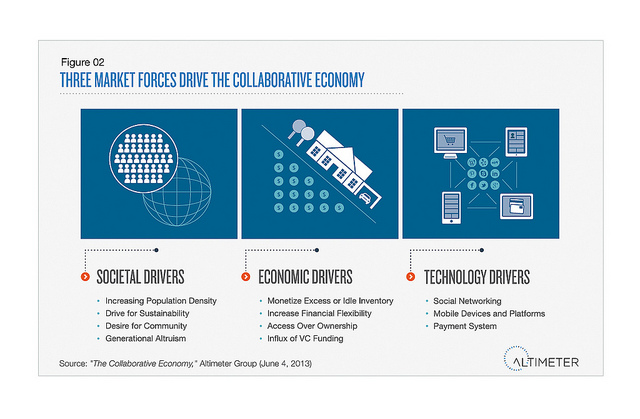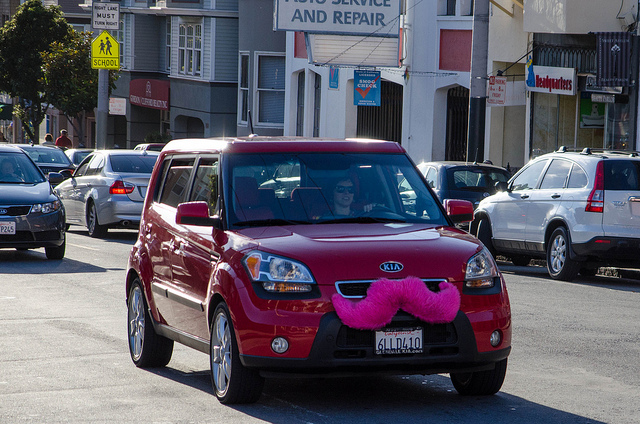
The growth of the Gig Economy is changing the way we view work. It is destroying some traditional work models, while creating new ways for people to free up time and pursue a different style of living. But is this disruptive work model the way of the future? Or is it creating more problems than it is solving?You may have heard of the Gig Economy before—maybe you’ve seen it mentioned in the news, or maybe you read our recent article on Gig Economy apps in NYC. If you haven’t heard of it, basically it is the project-by-project exchanging of a service for money. The distinct difference from the traditional service economy is the peer-to-peer aspect which eliminates the added cost and time of third-party service providers. TaskRabbit has become a prime example: the service provides people who need a task done (house cleaning, food shopping, assembling of IKEA furniture, etc.) with someone who is able to do it (a “tasker”) for an agreed upon price. Booking the job and paying the tasker all takes place via the app—a convenient way to get things done, or earn a quick bit of cash.
DISRUPTING THE TRADITONAL WORK MODEL
At our recent International Day event, Albert Wenger, partner at Union Square Ventures gave a presentation on “The Next Big Thing,” explaining how the breakdown of traditional work and sales models creates opportunities, but these new opportunities need regulation or problems can arise. One example he gave was that during the Industrial Revolution agricultural jobs disappeared faster than industrial jobs emerged; many problems arose from this, such as crowded cities, worker exploitation, and income inequality. The question is, will the rise of the Gig Economy do the same? Or can we find ways to protect people who want to make their living this way?There is no question that traditional models are being disrupted. With the myriad new gig economy apps and businesses popping up in cities across the world, people are finding gig work a refreshing way of freeing themselves from a traditional 9-5 work model and escaping the corporate structure which many find too rigid. With on-demand work opportunities, a person in the Gig Economy can work as and when he or she wishes, without having a boss to answer to or set hours they must follow. This rise in “micro-entrepreneurship” has been cited as a positive turn for the economy as it fills in gaps in the workforce and eases unemployment.New York is a particularly attractive market for this new economy to thrive, as time and resources are a bottleneck for many. However, governments are having a hard time keeping up with these new work models and most Gig Economy services still lack regulation, opening up issues both for workers and for the services themselves.
A HOT TOPIC
Since these services are disrupting existing business models, regulations designed to protect traditional businesses and employees are causing significant roadblocks to Gig Economy companies. For instance, San Francisco is giving TaskRabbit a hard time over the classification of its taskers as private contractors while ride-sharing service Lyft hit some bumps in its NYC launch due to regulators not being sure if it should be classified as a taxi service. At the same time, there is a lot of controversy over whether or not the gig economy is a successful or healthy model for micro-entrepreneurs. While working as and when you like sounds like everyone’s dream, does it actually pay? The growing industry is receiving significant amounts of criticism. Fast Company journalist Sarah Kessler, recently wrote an extensive piece about her experience in the gig-economy, judging it as little more than “hard work, low pay, and a system that puts workers at disadvantage.”Despite criticism, many appreciate the rise of new economies as a complement to the future prosperity of a wider economy. An example is New York Times Opinion-Editor Thomas L. Friedman who has repeatedly expressed his positive view of the sharing economy; claiming that companies in the sharing economy are “not the only answer for our economic woes—they create jobs, destroy jobs and create big efficiency savings all at once—but they are surelypart of the answer, and it’s a shame that we don’t spend more time thinking about how to multiply them.”
At the same time, there is a lot of controversy over whether or not the gig economy is a successful or healthy model for micro-entrepreneurs. While working as and when you like sounds like everyone’s dream, does it actually pay? The growing industry is receiving significant amounts of criticism. Fast Company journalist Sarah Kessler, recently wrote an extensive piece about her experience in the gig-economy, judging it as little more than “hard work, low pay, and a system that puts workers at disadvantage.”Despite criticism, many appreciate the rise of new economies as a complement to the future prosperity of a wider economy. An example is New York Times Opinion-Editor Thomas L. Friedman who has repeatedly expressed his positive view of the sharing economy; claiming that companies in the sharing economy are “not the only answer for our economic woes—they create jobs, destroy jobs and create big efficiency savings all at once—but they are surelypart of the answer, and it’s a shame that we don’t spend more time thinking about how to multiply them.”
COMPLEMENTS A WIDER ECONOMY
New Yorkers are famously open to innovation and new services. This very notion is the core of what drives New York’s unique ability to foster new services and trends. The convenience and value of these gig services is real. In a fast-paced city filled with forward-thinking early adopters, entrepreneurs will continue to invent services that cater to the booming demand, ultimately complementing a wider economy in terms of added jobs, revenue, micro-entrepreneurs, and general innovation.Though disruptive, the sharing and gig economy principles do not divert from the traditional economic and marketing ones; supply and demand are closely related. Established industries will need to find ways to collaborate and integrate these new ways of doing business—third parties such as the service, Crowd Companies, are already working to bridge the gaps between the two industries. At the same time, City officials and regulators in New York must speed up the process of creating new regulations to both protect workers and to push New York forward as a hub of innovation by not imposing bans that put the city’s booming community of entrepreneurs—and ultimately their consumers—at a disadvantage.

